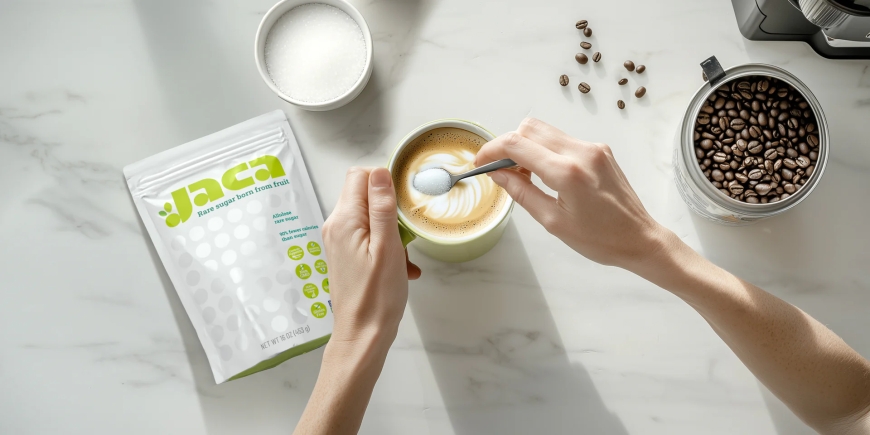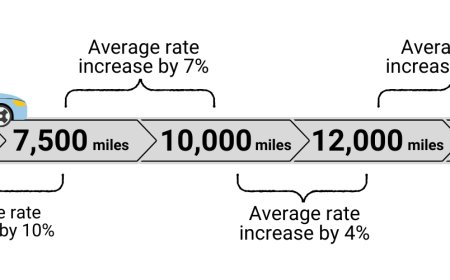From Fruit to Table: The Journey of Allulose Production

The story of allulose begins in nature's own laboratory, where this rare sugar exists in tiny quantities within fruits like figs, raisins, and jackfruit. Yet the journey from these natural sources to the pure, crystalline allulose that companies like Healthy For Life Foods offering JacaⓇ rare sugar seek provide to consumers is a fascinating blend of cutting-edge biotechnology, careful quality control, and respect for nature's original design. Understanding this process reveals why not all allulose products are created equal and why the production method matters as much as the final product.
Nature's Hidden Treasure
Allulose, scientifically known as D-psicose, occurs naturally in approximately 70 different plants and foods, but always in remarkably small concentrations. In wheat, it comprises just 0.1% of the total sugar content. Even in fruits where it's most abundant, like jackfruit, allulose represents less than 0.1% of the fruit's weight. This scarcity explains why, despite being naturally occurring, allulose remained largely unknown to consumers until advanced production methods made commercial quantities possible.
The natural presence of allulose in these fruits provides important clues about its safety and biological compatibility. For thousands of years, humans have consumed tiny amounts of allulose as part of their regular diet without adverse effects. This natural consumption history supports the safety profile that extensive clinical research has confirmed over the past five decades.
The Challenge of Scale
Extracting allulose directly from fruits would be economically and environmentally impractical. To obtain just one pound of allulose, processors would need to process thousands of pounds of fruit, creating massive waste streams and environmental impact. This reality drove researchers to develop more efficient production methods that could provide pure allulose at scale while maintaining its natural properties.
The breakthrough came through understanding allulose's molecular relationship to other sugars. Scientists discovered that allulose could be produced from fructose through a carefully controlled enzymatic conversion process that essentially replicates what occurs naturally in plants, but at commercial scale and efficiency.
The Enzymatic Conversion Process
Modern allulose production begins with fructose. The fructose undergoes enzymatic conversion using D-psicose epimerase, an enzyme that rearranges the molecular structure of fructose to create allulose. This process is remarkably elegant because it uses the same enzymatic pathway that plants employ naturally.
The enzymatic conversion process offers several advantages over chemical synthesis methods. First, it produces allulose that is molecularly identical to what occurs in nature, ensuring authentic taste and functional properties. Second, it avoids harsh chemicals or solvents that might leave residues or alter the final product's characteristics.
Temperature and pH control during enzymatic conversion are critical factors that determine both yield and quality. Premium producers invest in sophisticated monitoring systems to ensure optimal conditions throughout the conversion process, maximizing efficiency while preserving the natural properties that make allulose unique.
Purification and Refinement
The enzymatic conversion produces a mixture containing allulose, unconverted fructose, and various byproducts. The purification process separates these components to create pure allulose. This stage is where quality differences between producers become most apparent.
Chromatographic Separation: The gold standard for allulose purification involves chromatographic separation techniques that can achieve purities exceeding 95%. This method uses specialized resins that selectively bind different sugars based on their molecular properties, allowing for precise separation without chemical additives.
Crystallization: After initial purification, the allulose solution undergoes controlled crystallization to create the pure, white crystals familiar to consumers. The crystallization process requires careful temperature and concentration control to ensure proper crystal formation and prevent the incorporation of impurities.
Quality Testing: Reputable producers conduct extensive testing at this stage, analyzing for purity, moisture content, heavy metals, microbiological contamination, and residual solvents. Companies that prioritize quality often exceed industry standards, implementing additional testing protocols to ensure consistent product excellence.
Avoiding Unwanted Additives
One critical aspect of allulose production is what's NOT added during processing. Many commercial sugar products include anti-caking agents, flow aids, or processing aids that can affect taste and potentially impact health benefits. High-quality allulose production avoids these additives entirely, delivering pure allulose that maintains all the properties demonstrated in clinical research.
The decision to avoid additives reflects a commitment to product integrity that goes beyond minimum regulatory requirements. Jaca rare sugar focuses on purity and understands that the clinical research demonstrating allulose's benefits was conducted using pure compounds, making additive-free production essential for delivering promised results.
Environmental Considerations
Sustainable allulose production considers environmental impact throughout the entire process. Modern facilities implement closed-loop systems that recycle water and minimize waste generation. The enzymatic conversion process itself is relatively environmentally friendly, using biological catalysts rather than harsh chemicals.
Energy efficiency is another crucial consideration. Advanced production facilities use energy recovery systems and optimize process conditions to minimize energy consumption per pound of allulose produced. This environmental consciousness appeals to consumers who want their food choices to align with their values.
Quality Control and Testing
The journey from fruit-derived concepts to table-ready allulose involves multiple quality control checkpoints. Each stage of production includes specific testing protocols designed to ensure product safety, purity, and consistency.
Raw Material Testing: Production begins with testing fructose sources for purity and absence of contaminants. This initial screening prevents problems from propagating through the production process.
In-Process Monitoring: During enzymatic conversion, continuous monitoring ensures optimal conditions and early detection of any process deviations that might affect quality.
Final Product Analysis: Comprehensive testing of finished allulose includes purity analysis, microbiological testing, heavy metal screening, and sensory evaluation to ensure the product meets stringent quality standards.
Packaging and Preservation
The final stage of allulose's journey involves packaging that preserves its quality during storage and distribution. Allulose is hygroscopic, meaning it readily absorbs moisture from the air. Proper packaging prevents moisture absorption that could cause clumping or quality degradation.
High-quality producers use moisture-barrier packaging and may include desiccant packets to maintain optimal product condition. The packaging materials themselves undergo testing to ensure they don't interact with allulose or introduce contaminants.
Traceability and Transparency
Modern allulose production emphasizes traceability throughout the supply chain. This means being able to track each batch from raw materials through final packaging, ensuring accountability and enabling rapid response if quality issues arise.
Transparent producers provide detailed information about their production methods, quality standards, and testing protocols. This transparency allows consumers to make informed decisions and understand why premium products command higher prices than mass-market alternatives.
Innovation and Continuous Improvement
The allulose production industry continues evolving, with ongoing research focused on improving efficiency, reducing environmental impact, and enhancing product quality. Advances in enzyme technology, purification methods, and process optimization promise even better products in the future.
Some producers are exploring alternative feedstock sources and novel purification techniques that could further improve the sustainability and quality of allulose production. These innovations reflect the dynamic nature of an industry still in its growth phase.
The Human Element
Behind every technical process are skilled professionals who understand that producing high-quality allulose requires attention to detail and commitment to excellence. From food scientists optimizing enzymatic conditions to quality control specialists ensuring purity standards, human expertise remains essential to the production process.
The best allulose producers combine advanced technology with experienced personnel who understand both the science and the art of creating exceptional products. This human element often distinguishes premium producers from those focused solely on cost minimization.
From Production to Promise
The journey of allulose from fruit-derived origins to your table represents a remarkable achievement in food technology—taking nature's rare sugar and making it accessible to consumers who want sweetness without compromise. Understanding this process helps consumers appreciate why quality, purity, and production methods matter when choosing allulose products.
The companies that invest in superior production methods, avoid unnecessary additives, and maintain stringent quality standards are the ones most likely to deliver the authentic taste and health benefits that clinical research has documented. The journey from fruit to table may be complex, but the result—pure, natural sweetness that supports rather than undermines health—makes every step worthwhile.






































